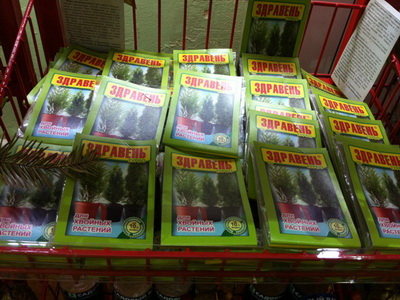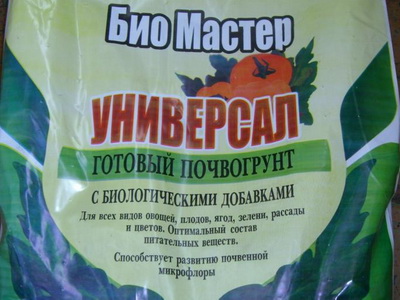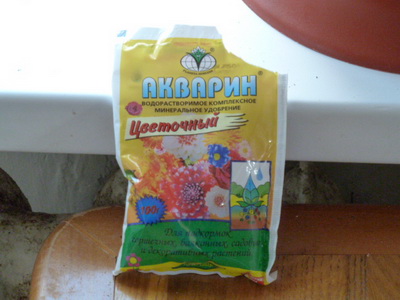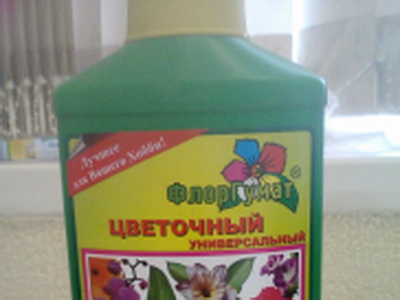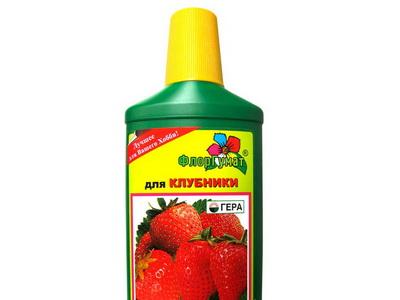Do you want to provide garden and home flowers with active growth and? Do you want to protect plantings from the invasion of pests and infections? Fertilizers for flowers in this case are the best helpers! Of course, you need to use them, strictly observing the dosage and timing of application. How you can fertilize flowers and in, you will learn by reading the descriptions of the best universal preparations.
What useful fertilizers can be used to feed flowers?
Below is a description of what fertilizers for flowers can be used at home and in the garden:
"Uniflor" recommended for garden and balcony plants. Excellent for feeding most flowers during the growing season. Contains 7 trace elements. Economical packaging for 20-25 liters of water (nitrogen -20%; phosphorus - 10%; potassium - 20% + magnesium + trace elements).
Fertika Lux Flower- water-soluble fertilizer for flowers and seedlings. It contains total nitrogen -16%; ammonia nitrogen - 7.9%; nitrate nitrogen - 8.1%; phosphorus - 20.6%; potassium - 27.1% and trace elements (iron, boron, copper, manganese, molybdenum, zinc).
"Hello" contains: nitrogen 16%, phosphorus 9%, potassium 20%, magnesium 0.7%, calcium 2%, sodium humate 2%, trace elements: boron 0.04%, manganese 0.03%, zinc 0.02%, copper 0.02%, molybdenum 0.01% .
This is one of those fertilizers that flowers need to increase their size and enhance the brightness of the color.
It also strengthens the root system of plants, promotes the formation of larger bulbs and rhizomes, and accelerates the development of plants.
How to fertilize flowers: the best fertilizers
"GUMI-OMI" is an organo-mineral, powder-granulated soft fertilizer for corms and flower plants.
In its composition contains: compost based on chicken manure, macro- and microelements, as well as Gumi fertilizer.
It is used to nourish plants, improve growth and decorative qualities, increase the duration, improve soil structure. This is one of the best fertilizers for flowers, perfectly balanced in organic, humic and mineral substances.
Contains in terms of dry matter: organics - not less than 20%, sodium humate - 0.4-0.6%; macronutrients, not less: nitrogen - 10%, phosphorus - 9%, potassium - 9%; trace elements of boron and copper - 200-300 mg / kg.
Fertilizer is used in dry form or in the form of an aqueous solution.
And what is the best way to fertilize flowers to enhance their growth?
"Bio Master" suitable for all kinds of ornamental plants. It consists of: 15% nitrogen, 5% phosphorus, 30% potassium and trace elements.
This flower fertilizer is best for: , . And also for alocasia, calathea, campanula, arrowroot, felicia,. Composition: 10% nitrogen, 14% phosphorus, 30% potassium and trace elements.
Complex fertilizers for flowers "Aquarin" and "Leika"
"Aquarin"- non-ballast fertilizer. In it, all the nutrients, and these are nitrogen, phosphorus, potassium, magnesium, sulfur, are in a very easily accessible form for plants, they are quickly and without loss absorbed by plants both during root and foliar feeding.
In addition, "Aquarin" is a complex fertilizer for flowers, as it contains a whole range of microelements (iron, zinc, copper, manganese, molybdenum, boron) in a balanced amount for plants. Moreover, they are contained not in the form of salt forms, but in the form of so-called chelates. These compounds do not allow trace elements to be fixed in the soil, but make them quickly absorbed by plants. Experienced gardeners know how important it is.
"Watering can" is a liquid complex organo-mineral fertilizer for decorative flowering plants. It contains nitrogen - 1.5%, phosphorus - 1.8%, potassium - 2.3%, humate - 0.15%, trace elements.
The fertilizer is specially designed for root and foliar top dressing of all types of ornamental flowering garden, balcony and indoor plants. A set of nutrients ensures full development, accelerates growth, provides high decorativeness, and the presence of humate contributes to a more complete absorption of nutrients by the plant. Lake's fertilizer is also used for soaking.
Balcony and garden plants are fed once every 7-10 days from the moment of germination or a week after planting seedlings until the end of the growing season, from early spring to the end of July.
Soaking seeds is carried out immediately before sowing for 12-24 hours in a solution at the rate of 10 ml per 1 liter of water.
What is the best fertilizer for decorative flowers?
And what kind of fertilizer to feed the flowers to protect them from viral and fungal infections?
"FlorHumate for ornamental flowering plants" provides good nutrition and development, is a growth stimulator, increases resistance to various diseases and frosts.
Helps to improve the decorative properties (including due to more intense coloring of the petals and leaves of plants, increasing the size of the calyx), stimulates the growth of plants and the development of their root system, provides long-term flowering, increases resistance to adverse environmental factors.
What else can you fertilize flowers?
"FlorHumate Flower Universal" contains the following nutrients (g/1 l): humic acids - 2.0; nitrogen - 15.0; phosphorus - 1.5; potassium - 4.0; calcium - 0.35; magnesium - 0.08; sulfur - 3.0. Trace elements, g/l: boron - 0.1-0.3; molybdenum - 0.02-0.04; manganese - 0.4-0.7; zinc - 0.3-0.45; copper - 0.1-0.2; cobalt - 0.02-0.04; iron - 0.06-0.1.
If you do not know which flower fertilizer is better, use "FlorGumat": it is intended for pre-sowing treatment and top dressing of all types of house flowers and landscape gardening plants. Promotes lush and long-lasting flowering, improves decorative properties, stimulates the development of the root system, increases resistance to adverse environmental factors.
"FlorHumate for bulbous" contains nutrients in the amount (g / 1 l): humic acids - 2.0; nitrogen - 12.0; phosphorus - 1.5; potassium - 3.0; calcium - 0.35; magnesium - 0.08; sulfur - 3.0. Trace elements, g/l: boron - 0.1-0.3; molybdenum - 0.02-0.04; manganese - 0.4-0.7; zinc - 0.3-0.45; copper - 0.1-0.2; cobalt - 0.02-0.04; iron - 0.06-0.1.
Designed for fertilizing and top dressing, gladioli, tulips, irises, daffodils, hippeastrums, as well as onions, garlic and other bulbous plants. Provides long flowering, high decorative properties, increased yields and improved product quality. Increases resistance to adverse environmental factors.
How nice it is to admire the variety of colors of indoor plants on a cloudy autumn day! When it rains or snows outside the window, and a new flower blooms on the windowsill - how much joyful emotions it brings!
Yes, green "pets" always give extra comfort, cause admiration, and relieve stress. However for flowers to be beautiful and healthy, they need not only light and water, but also timely feeding. In gratitude for the fertilizers applied, the flowers will delight for a long time with their beautiful appearance and regular flowering.
When do you need to feed green "friends"? Which fertilizer for indoor plants is better to choose: organic or mineral? How and from what to prepare top dressing at home?
When and why to fertilize plants
Some flower growers neglect the feeding of indoor flowers. And that's bad. After all, the area of \u200b\u200btheir food is limited by the small size of the pot. And the plant itself quickly depletes the soil, because it needs a lot of nutrients. The result is a forced “diet”, the result of which may be a loss appearance, weak flowering or its absence, the appearance of diseases.
One solution to such problems may be to transplant the flower into a new nutrient soil. However, it is important to take into account that useful substances necessary for the full development of the plant, enough for 2 months but not for a year. Therefore, after 60 days after transplantation, the green "friend" already needs additional feeding. This is especially important during the period of active growth and flowering.
Indoor flowers can signal that they need urgent fertilizer. These calls are:
Indoor flowers need feeding in and growth. It's spring- summer period- from April to September. In the autumn-winter dormant period (October - February), the frequency of top dressing should be reduced by 2-3 times or completely stopped.
How to feed indoor flowers at home is your choice, it is important to observe the dosage and time of feeding.
Mineral fertilizers for indoor plants
For proper growth and development of flowers, the presence in the soil is necessary:
- Trace elements - phosphorus, magnesium, nitrogen, potassium, sulfur, calcium;
- Macroelements - zinc, boron, manganese, cobalt, molybdenum.
Mandatory compound mineral dressing should be iron. The correct ratio of nutrients is very important.
When choosing a fertilizer, it is necessary to consider which plant it is intended for.. So, flowering representatives of room flora need more potash and phosphorus fertilizers. The optimal composition for them will be for 1 liter of water:
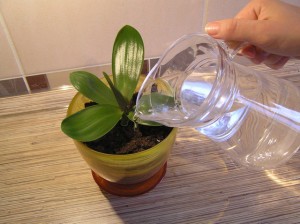
Ornamental foliage flowers need more nitrogen fertilizers to maintain a luxurious look of foliage. To do this, dilute in 1 liter of water:
- 0.4 grams of ammonium nitrate;
- 0.1 grams of potassium nitrate;
- 0.5 grams of superphosphate.
Top dressing of indoor plants is carried out every 7-10 days. The temperature of the solution should be 3-4 degrees above room temperature.
Once a month, you can carry out foliar feeding, that is, spraying on the sheet. The composition required for this is to dissolve 1 gram of carbamide (urea) in 1 liter of water. You can feed with mineral fertilizers during the period of active growth - from April to September.
Natural fertilizers for indoor flowers at home
Sometimes it is not possible to buy complex fertilizers for indoor flowers in the store. And their effectiveness is not always tested. In this case, simple dressings prepared at home from what is always at hand are suitable.
With their availability, the effectiveness of natural fertilizers has been proven by the time and experience of many flower growers. Top dressing for indoor plants and flowers at home can consist of different products and products.
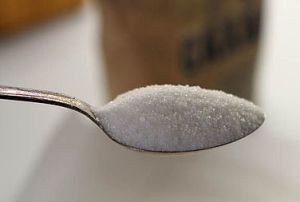 You can use sugar for flowers as a fertilizer. And outstanding "sweet tooth" are cacti.
You can use sugar for flowers as a fertilizer. And outstanding "sweet tooth" are cacti.
Glucose is essential for plants, which is formed after the breakdown of sugar.
It is useful in two respects. Firstly, it promotes the formation of complex molecules, being an excellent building material. Secondly, it is a source of energy for the normal course of all processes taking place in a flower.
To feed plants, it is enough to sprinkle 0.5 teaspoon of sugar on the soil in a pot, and then pour it with water.
Especially effective is the use of sugar with the preparation "Baikal-EM-1". For this, the drug is diluted in the proportion indicated in the instructions. Further, 1 tablespoon of sugar is added to 0.5 liters of the prepared solution. Water the flowers with this mixture.
Sugar as a fertilizer for indoor plants can be used no more than once a month.
Coffee
 Coffee grounds can be used as a top dressing for houseplants. It is very convenient to use coffee as a fertilizer for indoor plants, because you do not need to specially prepare anything.
Coffee grounds can be used as a top dressing for houseplants. It is very convenient to use coffee as a fertilizer for indoor plants, because you do not need to specially prepare anything.
After drinking a cup of morning coffee, the remaining thick can be poured into a flower pot. Subsequently, it will play the role of mulch (surface soil cover), so that the flower can be watered less often, and the soil will become lighter and looser, and the oxygen content will increase.
In addition, useful elements from coffee grounds will gradually enter the soil when watering and, accordingly, feed the flower little by little.
It is important to know that the use of coffee as a fertilizer increases the acidity of the soil.. Therefore, this top dressing is suitable mainly for plants that prefer acidic soil. These include camellia, gardenia,.
Fertilizing indoor flowers with yeast
 Yeast as a fertilizer for indoor flowers contains many useful substances that have a beneficial effect on plant growth: B vitamins, phytohormones.
Yeast as a fertilizer for indoor flowers contains many useful substances that have a beneficial effect on plant growth: B vitamins, phytohormones.
To prepare the solution, you can use both ordinary yeast and dry. In the first case, 10 grams of yeast, 1 tablespoon of sugar are dissolved in a liter of warm water.
In the second - 2 grams of yeast, 2/3 tablespoon of sugar are dissolved in 2 liters of water. Let it brew for 2 hours. Then dilute the resulting solution with water in a ratio of 1: 5 and water the flowers.
This article is often read:
banana peel
 It is an excellent fertilizer for flowering indoor plants, especially indoor roses, because it contains the necessary trace elements - potassium, phosphorus, magnesium.
It is an excellent fertilizer for flowering indoor plants, especially indoor roses, because it contains the necessary trace elements - potassium, phosphorus, magnesium.
Banana peel fertilizer for houseplants can be applied in several ways:
- Dry it and then grind it in a coffee grinder. Add the prepared powder to the soil when planting or transplanting - lay in a layer after drainage;
- Fill half a liter jar with fresh peel, fill to the top with water, leave for 24 hours. Use as top dressing once a week.
Banana as a fertilizer for indoor plants is very convenient to use.
Citruses and other fruits
To obtain a useful solution, fill a third of a liter jar with citrus peel and pomegranate and pour boiling water over it. Insist 24 hours, take out the skins. The volume of liquid is adjusted to 1 liter clean water. Home fertilizer for indoor flowers is ready - you can water the plants.
Ash as a fertilizer for indoor plants
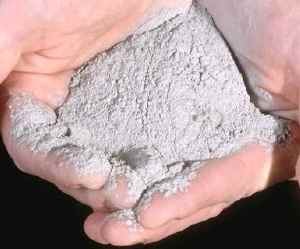 Ash for indoor plants has two useful properties at once.
Ash for indoor plants has two useful properties at once.
Firstly, it is disinfectant - it prevents root rot and serves as a preventive measure for various diseases.
Secondly, it nourishes the flower with useful elements: potassium, phosphorus (in a form easily accessible to the flower), iron, magnesium, calcium, and sulfur.
When transplanting a plant, ash can be added to the soil. Also, a solution is used for top dressing. To prepare it, you need to dilute a tablespoon of ash in a liter of water and leave for 7 days.
Top dressing should be done every 10 days.
onion cocktail
A decoction of onion husks is used to spray the plant and potted soil. Such foliar top dressing increases plant resistance to diseases and prevents the appearance of pathogens and pests.
To prepare a cocktail, pour 50 grams of onion peel with a liter of water, boil, keep on low heat for 10 minutes. Insist 3-4 hours. Cool, filter from the husk and use for spraying with a spray bottle. It will not work to store the broth, so each time you need to prepare a new one.
Starch (potato)
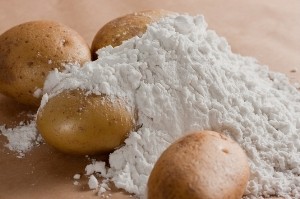 Houseplants respond to starch feeding. This is due to the content of glucose in it, which is a source of energy and building material.
Houseplants respond to starch feeding. This is due to the content of glucose in it, which is a source of energy and building material.
Starch will bring the greatest benefit to tuberous and bulbous flowers.
After the potatoes are cooked, do not pour out the broth, but cool it and use it to water the plants.
aquarium water
Aquarium water can be used to feed plants. The water drained when cleaning the aquarium contains a large amount of nitrogen compounds. If you pour such water on an indoor flower, it begins to intensively increase the leaf mass.
Use aquarium water for feeding only in the spring and early summer.. This is the time of active vegetation of plants, and fertilizer helps them in this. In the second half of summer, such top dressing is stopped.
During this period, flowering begins, so it is necessary to use fertilizers with a different composition to increase the flowering time, and then to ripen the shoots. Also, aquarium water is not used to feed slow-growing species and cacti.
Vegetable decoctions
To make complete liquid fertilizers at home, use onion peel and potatoes. Onion broth is not harmful to indoor plants, it contains a large amount of macro- and microelements, as well as organic components.
 Therefore he considered a high-quality complex fertilizer. To prepare a decoction, 1 or 2 presses of onion peel are poured with boiling water in the amount of one liter. It is boiled for no more than 5 minutes, after which it is cooled and filtered.
Therefore he considered a high-quality complex fertilizer. To prepare a decoction, 1 or 2 presses of onion peel are poured with boiling water in the amount of one liter. It is boiled for no more than 5 minutes, after which it is cooled and filtered.
Potato decoction is successfully used to feed plants. It shouldn't be salty. The decoction is diluted with water in a ratio of 1:5. It is necessary to dilute it with water, since the starch contained in it, if it enters the soil, can cause it to acidify.
succinic acid
This drug is sold in the pharmacy network. Succinic acid is a powerful growth stimulant for indoor and garden flowers. It can be called a resuscitator, since after treating weak plants with this drug, they recover very quickly.
Succinic acid is applied to the soil as a fertilizer. It also treats the roots, shoots and leaves of plants and seedlings. Cuttings for better rooting are soaked in a solution of this substance for 12 hours. Seeds before sowing are also recommended to soak for several hours in such a solution to increase germination.
As a top dressing for indoor plants, succinic acid is used only in the spring months and early summer. During this period, the plants are watered with a solution twice a month. To prepare a solution of succinic acid, you need to dissolve one tablet of the drug in 0.5 liters of water.
Tea and tea brew
Indoor plants can be fed by watering with tea leaves. In this case, re-brewed tea is usually used. At the first brewing, a too strong composition is obtained, which must be diluted with water for feeding. When re-brewing, plants can be watered with undiluted cooled tea.
Tea decoction contains many substances useful for indoor plants.. With weekly tea watering, indoor flowers grow much faster, and their immunity is strengthened. To prepare a decoction, you need to take a glass of dried tea leaves and pour 3 liters of boiling water.
Other natural fertilizers for indoor plants at home
Aloe juice stimulates the growth of the flower and increases its immunity. For top dressing, you need to dilute a teaspoon of juice in 1.5 liters of water and water the flowers with a solution.
Eggshell  used to fertilize various indoor flowers, except for those that love acidic soil.
used to fertilize various indoor flowers, except for those that love acidic soil.
To prepare the infusion, crushed eggshells are poured with water (in a free proportion) and infused for 10-14 days. fertilizer from eggshell for indoor flowers use once a month.
Nettle. Nettle infusion tends to restore and enrich depleted soil. To prepare it, you need to pour 100 grams of fresh (20 grams of dried) nettle with a liter of water. Insist 24 hours. Strain, dilute with water in a ratio of 1:10, water the flowers.
When using different top dressings, it is important to remember that in this matter, it is better to “underfill” than “overfill”. If you overdo it with fertilizers, the plant may stop developing normally and even die. Feeding is beneficial when it is balanced and suitable for a particular plant.
Now you know how and how to fertilize indoor flowers at home.
The impact of organic fertilizers on soil and plants
Most higher plants get their nutrition for their growth and flowering from the soil. The soil is a complex structure that contains not only organic and mineral components, but also bacteria, fungi and microorganisms.
The plant absorbs with its root system from the moist soil dissolved in water organic matter and micronutrients. Its root system enters into a complex interaction with the soil microflora, which makes the nutrition process more efficient.
Houseplants usually grow in small amounts of land limited flower pot . The amount of nutrients in the process of life of the plant decreases very quickly. After 2-3 months, the plant does not receive sufficient nutrition from the soil.
Also, when the soil is depleted, there is a violation of the biocenosis inside it. Microorganisms and fungi living in it and participating in the process of plant nutrition die, which leads to an even greater malnutrition of the houseplant.
To keep the soil in proper condition, it is necessary to apply fertilizers to it. The most important of them are organic mixtures, which allow in a short time to saturate the soil with natural organic matter, maintain its structure and microflora.
Purchased ready-made liquid or soluble plant fertilizers
Today, the most popular fertilizers for indoor plants are liquid formulations. They are sold in small plastic bottles. Such preparations should be diluted with water to obtain the required concentration of nutrients. The plant is then watered with this solution. Usually these are complex fertilizers containing organic and mineral substances. Instructions for use of each product are available on its label.
Liquid fertilizers for flowers are easy to use, as it is not difficult to prepare a small amount of solution for irrigation. There are fertilizers for deciduous and flowering plants, which differ in composition. Therefore, it is necessary to choose products for a certain type of plant, taking into account its chemical composition.
Liquid feeding complex fertilizers carried out a few hours after the main watering of the plant. The soil must be moist, otherwise the roots can get burned by minerals.
You can also find soluble fertilizers for indoor plants on sale. These are powders that you need to dilute with water yourself, and then water the flowers. Such preparations are designed for a small amount of water - from 1 liter.
Some liquid and soluble fertilizers are used for foliar feeding. So you can feed and, which are able to absorb nutrients through the surface of the leaves. When foliar feeding, the prepared solution is sprayed directly onto the leaves of the plant.
There are many popular brands of liquid and soluble fertilizers for indoor plants. Among them are both domestic and foreign. Consider the best fertilizers for indoor plants.
Garden of Miracles
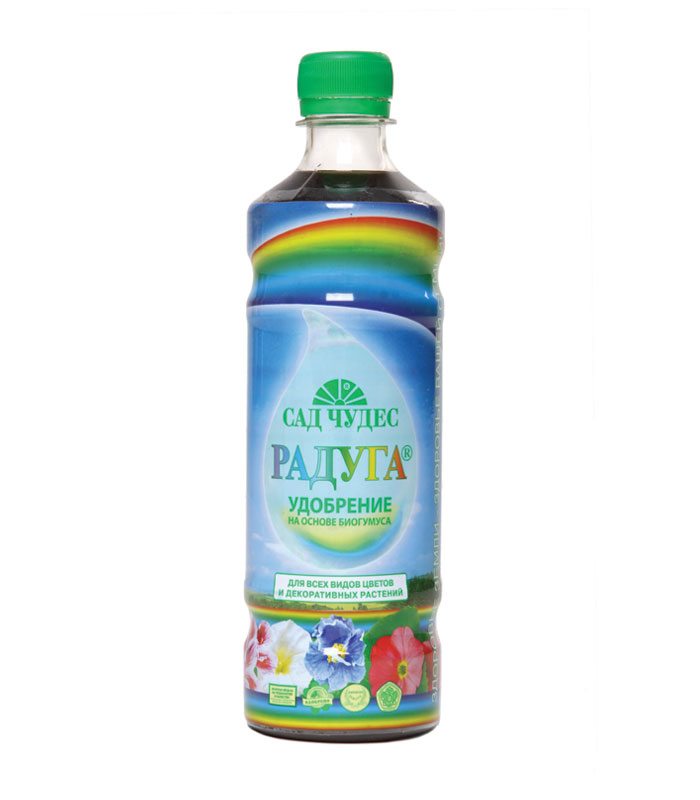 Domestic complex liquid fertilizer for deciduous and flowering indoor plants.
Domestic complex liquid fertilizer for deciduous and flowering indoor plants.
It is produced on the basis of biohumus with the addition of mineral macro- and microelements. It is used for root and foliar top dressing.
Dr. Foley
This is a liquid foliar fertilizer produced in Ukraine. It contains macro- and microelements, phytohormones, amino acids and vitamins. A convenient spray bottle helps to evenly process the leaves of the plant.
Zielony Dom
This Polish manufacturer provides universal liquid fertilizers based on the natural component of guano enriched with iron. Apply to flowering and decorative foliage plants. Orchid foliar formulations are also available.
Italian-made soluble fertilizers are available in convenient packaging - foil bags of 25 g each. They are intended for root and foliar feeding. These mineral fertilizers are based on seaweed. Many products of this brand are produced, intended both for feeding deciduous and flowering plants, and for their specific species.
IRIS OHYAMA
This brand is liquid mineral fertilizers made in Japan. The company manufactures products of various types:
- To accelerate the growth of indoor flowers;
- To activate flowering;
- For the development of the root system.
- To increase the resistance of plants to diseases;
- Fertilizers for orchids.
Using manure as a fertilizer
One of the most valuable organic fertilizers is humus. It is obtained from manure that has completely decomposed and decomposed in heaps under plastic wrap. Maturation lasts 1.5-2 years. It turns out a homogeneous, free-flowing, friable mass of brown color, which has an earthy smell.
Manure is included in most potting mixes for houseplants.. It makes the soil nutritious, retains water in it, makes the soil looser, promotes the penetration of air to the roots of the plant. Do not use it only for some plants that need a depleted soil composition. It is also used as an organic fertilizer.
Usually, humus is used once during a regular plant transplant.
1/4-1/5 of this fertilizer is added to fresh soil. Then the flower is transplanted into the resulting earthen mixture. Large plants that cannot be transplanted simply cannot do without humus. Pot specimens are not transplanted, but only the topsoil is removed, and humus is poured instead. Now, when watering, organic matter from the upper layer penetrates into the lower ones and nourishes the plant.
For organic plant nutrition in the summer, liquid fertilizer can be made from humus. To do this, 1 kg of humus is infused in 10 liters of water for 1.5-2 days, mixing thoroughly. The resulting infusion without filtering and diluting with water can be watered indoor plants 1-2 times a season.
Now you know how to prepare flower fertilizer at home or how to choose the right ready-made plant food.
To have indoor flower crops in good condition, they need to be fertilized correctly and in a timely manner. Rationally selected fertilizers are very important for rapid growth and development, as these plants have a limited amount of substrate. But what kind of fertilizer is better to feed indoor flowers, we will consider in this article.
Types of fertilizers for indoor plants
Novice flower growers, who are just gaining experience in growing potted plants, are often lost from the variety of modern and folk fertilizers.
There are such types of dressings:
- mineral;
- organic;
- organo-mineral;
- microfertilizers;
- bacterial.
The basis that all mineral and organic fertilizers are nitrogen, phosphorus and potassium. Every plant needs these components. IN different time, the same indoor culture uses different amounts of each nutrient.
Nitrogen fertilizers are:
- ammonia;
- ammonium;
- nitrate;
- amide;
- ammonium nitrate.
The first type is the most widespread. The superiority of ammonia supplements in their low cost and high level concentrations, and the increase in soil acidity provoked by them is removed with lime.
The peculiarity of nitrogen fertilizers is easy dissolution in water and fast flow to the roots of the crop. Ammonium nitrate can be used on all types of soils, but it is most needed on podzolic soils. It is recommended to use it along with watering the plant. If the flower has enough phosphorus and potassium, then the effectiveness of nitrogen fertilizing will be much higher.
Potash fertilizer also favorably affects the development of a pot culture, and in combination with phosphate dressings is used to achieve abundant flowering. This type of top dressing is suitable for decorative flowering plants. 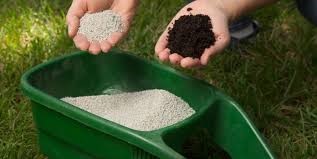
Complex fertilizer for indoor flowers on a mineral basis, is considered an ambulance for many potted crops. They are produced in a liquid state and in the form of granules, and there are also sticks, capsules, and in the form of tablets.
Liquid fertilizer is practical and easy to use. It is simply diluted with water according to the instructions, and used. The liquid form of top dressing is a concentrate of salts, it allows the roots of the plant to immediately absorb the beneficial components. This food can be purchased both for a specific type of plant, and universal. There are liquid top dressings for orchids, succulents or palm trees.
With the help of this fertilizer, a solution for foliar spraying is prepared. This type of top dressing will allow you to saturate the plant with useful substances through its leaf plates. They will absorb the right amount of nutrients, and the excess will not harm the plant.
Foliar fertilizer cannot replace plant nutrition through the root system, but is only an additional method during the period of intensive vegetation.
Organic supplements include:
- humus;
- compost;
- bird droppings;
- mullein;
- green fertilizers;
- peat;
- homemade fertilizers.
A feature of organic matter is the improvement of soil structure, a positive effect on its physical characteristics and also increases its air and water permeability. All this makes the soil more fertile. For plants, this is an excellent source of nutrition, since in addition to the main components (NPK), organic matter also contains a lot of trace elements, and the substances are in an easily accessible form.
Depending on the condition of the soil in which it grows indoor flower, give organic fertilizers. The poorer the soil in the pot, the more organic matter you need to add to it when planting.
Microfertilizers- these are substances containing trace elements, after they are introduced into the soil, plants can easily "take" these nutrients from there. Microfertilizers exist both with a specific active substance and complex ones. In the second case, they are able to saturate the flowers with the main trace elements. The only caveat: it is necessary to adhere to the norms specified in the instructions.
Bacterial fertilizers plant nutrition products containing special microorganisms are called. They enhance the metabolism and nutrition of the plant as a whole. This happens because bacteria transport nutrients to their root system.
The role of fertilizers and their importance
As already noted, the main components of most plant nutrition products are nitrogen, phosphorus and potassium.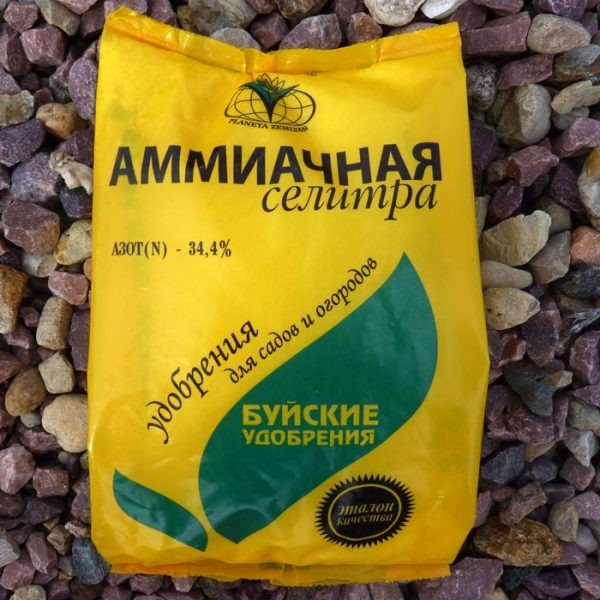
Nitrogen necessary during intensive vegetation, it is responsible for the formation of fruits. It is the building material for the aerial part of the pot culture. This item is irreplaceable. Plants need it most in the period that begins with the emergence of seedlings, and before the formation of flowers. When nitrogen is present in the soil, it is consumed by the flowers, broken down into ammonium and nitrate.
Fertilizer of indoor flowers with saltpeter is the most common today. This nutrition is effective: external factors of nitrogen deficiency are quickly eliminated, such as the slow growth of the green parts of the plant, as well as the light green color of the leaves, sometimes with yellowness. This unhealthy coloration occurs due to a violation of the processes of photosynthesis.
Phosphorus is an indispensable component during the spitting of seeds. Also, this component takes part in the process of photosynthesis, and enhances the resistance of plants against various diseases.
Potassium- an element responsible for the quality of ripened fruits, and also, together with phosphorus, it increases resistance to plant diseases. It enhances the action of other substances, helps the flower develop properly. It helps to retain moisture in the soil, which makes plants more easily tolerate drought, frost, and other adverse conditions. Plants need potassium to prepare for dormancy.
In addition to these macronutrients, indoor flowers also need micronutrients in a balanced amount.
The choice of fertilizers depending on the season
When spring comes, all plants are activated. Indoor flowers are no exception. Spring is the time of the year when you should start fertilizing indoor flowers so that they start their development correctly after a dormant period and delight us with intense flowering.
With the onset of March, the number of sunny days increases, and indoor plants begin their growing season. This is the best time for transplanting, cuttings, growing from seeds. When the owner of the pot culture has decided that the plant does not need to change the soil, then it must be fed.
All feeding is carried out in the period from March to September, once every half a month. Then, starting from mid-October, and in the following months, the rest time begins for plants. Some potted crops are an exception. Plants that bloom in autumn and winter:
- poinsettia;
- azalea;
- Decembrist;
- hippeastrum.
Novice flower growers often wonder: how to fertilize indoor crops in winter. When the plants are in a dormant period, they do not need to be fed at this time.. Actual fertilizers only the above colors because they develop and bloom.
The most popular home fertilizers
Fortunately, plant nutrition can be organized not only with ready-made dressings purchased in specialized stores, but flower growers today also use natural fertilizers prepared in the kitchen. For this, various food waste and some medications are used. 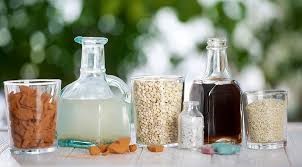
The most commonly used household fertilizers are sugar, wood ash, banana skins, eggshell, yeast.
Each substance has certain characteristics and rules of use. Experts evaluate these fertilizers ambiguously, sometimes there are disputes about the effectiveness of a particular product.
Their opinions may be just the opposite. Therefore, when using a certain remedy, it is necessary to be attentive to the green pet, and notice changes in the state of its development.
banana peel fertilizer
After eating a banana, its peel is washed and dried. Then they are ground in a coffee grinder, and a powder is obtained. Options for fertilizing banana peel there are two plants. The first - the crushed shell of this fruit is mixed with the substrate when planting a flower in a ratio of 1:10. The second option is when banana peel powder is spread on the surface of the soil as mulch, and then with each watering, the plant receives a certain amount of nutrients.
How often to fertilize? Every month 1 time.
From eggshell
Often flower growers note that the most good fertilizer for indoor flowers, this is the shell of eggs. It contains a whole storehouse of trace elements. Among them are calcium, iron, zinc, silicon, magnesium and others. This top dressing also affects the decrease in the acidity of the soil mixture.
Prepare this food for indoor flowers as follows:
- The shell is washed in running water.
- Remove the inner film from it and grind it.
- Fill with water and insist for 3 days.
- The liquid is drained and used for watering potted crops.
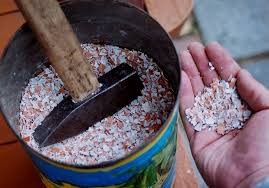
Also, egg shells can be used as drainage. To do this, before planting the plant, it is laid out on the bottom of the container, then the substrate is poured and the flower is planted.
Succinic acid as a fertilizer for indoor flowers
Succinic acid is an effective growth stimulant. To achieve a positive result, it is necessary to dilute 1 g of powder in half a bucket of water or 1 tablet per 1 liter of water at a comfortable temperature. This solution can be used to water the substrate, or spraying can be done. According to flower growers, after a week more active growth begins, flowering intensifies.
Succinic acid helps the absorption of nutrients, increases the immunity of plants. It is not a top dressing, it is only an additive. Seeds are soaked with it, cuttings are rooted, watered and sprayed.
tea drinking
Some indoor flower lovers pamper their "green friends" with tea. But if you sprinkle it on top, then black flies can start. It is better if, when transplanting a plant, put a tea bag on the bottom. From this potted culture should get the maximum benefit.
Coffee as a fertilizer for indoor plants
Treating the flower with coffee waste is also popular. Coffee needs to be brewed and drunk, and the plant needs to pour the remaining thick into the soil. Then it is mixed with the topsoil.
After applying such a fertilizer, the soil structure improves, water and air permeability increases, it is saturated with nitrogen and microelements.
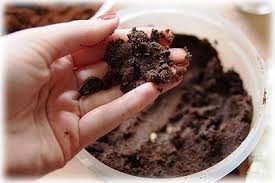
But not all pot cultures like this "treat". It can only be applied to plants growing on acidic soils. Among potted plants, this azalea, fuchsia, fern, anthurium.
Castor oil as a fertilizer
There is one more flowering stimulator, which is often used to enhance the formation of buds and lush blooming of flowers. It's castor oil. They take a teaspoon, pour it into a liter jar of water and mix thoroughly. Next, water the indoor flowers with this top dressing.
Flower growers, figuring out what a good fertilizer is, often mark this remedy as quite effective.
Ash
Wood ash as a nutrient for plants has been used for a long time. It contains about 70 different macro and microelements. Almost everything is there - the only exception is nitrogen. The impact of ash on flowers is difficult to overestimate:
- Feeds plants.
- Effectively protects bushes from pests.
- It is a good remedy for fungal diseases of flowers (after spraying).
- Disinfects the substrate.
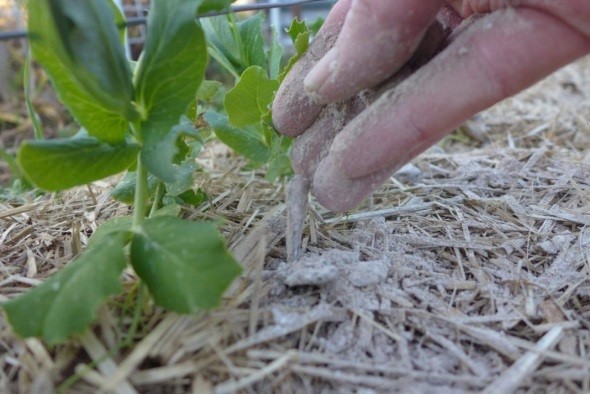
To prepare the ash solution, take 1 tbsp. l. funds, and diluted in 1 liter of water, and then filtered.
Part wood ash includes many useful substances, not only nitrogen. Therefore, in addition to using this tool, you need to know how to fertilize plants with ammonia or urea.
Yeast as fertilizer
Potted crops are very supportive of fertilizing with yeast fertilizer. It is useful because of the content of many nutrients, among which are amino acids, minerals, protein, microorganisms for the soil.
With all the advantages, yeast takes potassium from the soil, therefore, experts advise add the ash solution at the same time.
We will learn how to fertilize indoor flowers with yeast. To do this, take 10 g of dry yeast and dilute them in a liter of water with the addition of 1 tbsp. l. sugar (liquid should be warm). Then they insist for several hours. After that, the contents of the container are again diluted 5 times.
Other home fertilizer recipes
There are many recipes for nutrient mixtures for plants. The above are only a small part of complete list fertilizer prepared by yourself.
Top dressing from infusion of onion peel
If the plants lose their attractiveness, then something urgently needs to be done. How can you quickly improve their well-being? To do this, prepare an infusion of onion peel (it is easy to prepare, and there is always raw material).
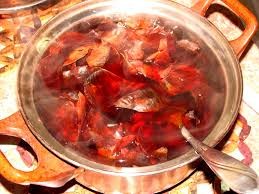
Husk is placed in an enameled container and poured with one and a half liters of boiling water. Boil it for up to 7 minutes, and then set aside, insist for 2 hours and filter. You can spray both plants and the soil in which they grow. This procedure will contribute to the prevention of disinfection. Also, a decoction of onion wraps contains many useful substances, therefore, in addition to disinfection, it plays the role of a full-fledged fertilizer.
How often to fertilize potted crops with this decoction? It's best to do it once every 2 months but maybe a little more often.
Onion broth is not subject to storage, therefore, each time it is necessary to prepare fresh.
Orange peel compote as fertilizer
Most people love to eat citrus fruits. Peels are usually not used in this case, and they fly into the trash can. But they are able to benefit plants, in particular indoor plants.
Therefore, they should be put in a jar with a capacity of 1 liter, and pour boiling water to the top. After cooling, you need to dilute this broth again.
You can use both fresh orange peels and dried ones. Houseplants like this decoction very much: they get sick less often and become more resistant to pests.
Plants love sugar too
All potted crops like to be fed with sugar.
They can be sprinkled on top of the soil mixture, or diluted as a liquid fertilizer. To prepare a sugar solution, take a teaspoon of sugar per 200 ml of water. The frequency of such meals is 1 per week. In a row, you can do this no more than 3 times, otherwise, this top dressing can harm the plants.
Potassium permanganate as a fertilizer
The role of a light solution of potassium permanganate applied to the soil as a top dressing is impressive:
- its chemical formula contains potassium, which is so necessary for plants;
- it slightly acidifies the soil, therefore it is used for plants that love high acidity;
- disinfects the substrate in which the flower grows, and thus prevents various diseases.

The answers to the question of how to properly apply fertilizer with potassium permanganate differ from different specialists. They all unanimously argue that it should be a light, unsaturated pink solution, but everyone has their own frequency of watering. Some treat the soil once every six months, others more often.
Rules for diluting potassium permanganate: this requires transparent dishes to visually observe the process. Should be poured warm water because it speeds up the dissolution.
It is necessary to thoroughly mix the potassium permanganate until it is completely diluted - otherwise you can burn the roots of the plant.
Plant nutrition with manure
Manure refers to organic top dressing, and few people do not know how to fertilize indoor flowers with manure. But still, it should be clarified that it is applied when transplanting a potted crop, and well-ripened compost can be used to mulch the top layer of the soil mixture. Liquid organic fertilizers are given when watering plants.
Zircon is an excellent growth stimulant
The zircon preparation contributes at the cellular level to a more intensive development of flower bushes. The impact of the product on the development of plants:
- He takes part in the development of the roots and the green part of the culture.
- Improves rooting of cuttings.
- It helps to more easily endure not only the lack of moisture, heat and light, but also their excess.
- Raises the level of plant resistance against diseases and pathogenic microflora.
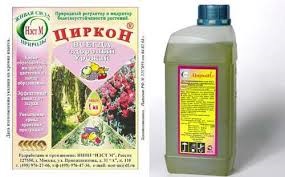
Dilute it according to the instructions (4 drops per 1 liter of water), and add another (0.2 mg) to the water with it. citric acid, since zircon gives an alkaline reaction. The flower is sprayed in the dark time of the day so that this remedy does not collapse in the light.
To be effective, it must be applied in parallel with organic or mineral supplements. Plants should be treated with zircon using protective equipment: glasses, gloves, overalls. Do not smoke near its use.
Hydrogen peroxide as a top dressing
This tool works in floriculture to enrich the roots with oxygen. How to fertilize indoor flowers with hydrogen peroxide, and how it works, we will consider below.
To determine the dosage, you need to know its purpose of use. 3% drug is used:
- For the improvement of a substrate that has not been replaced for a long time - 3 ml of the product is given per 1 liter of water.
- For irrigation - up to 10 drops per liter of liquid.
- In order to disinfect the material for planting - a one-piece product.
- For water treatment - for 5 liters of water, 1 ml of peroxide.
It perfectly reanimates flooded cultures: it stops the rotting of the root system. Also, as a prophylactic agent, it works on old soils.
Doses and timing
What is the best way to fertilize the following houseplants, and how many ml of fertilizer to give for each of the listed houseplants:
| plant names | Fertilizer | Timing | Doses |
| Violet | Mister Color - Saintpaulia | Every 14 days of the growing season | For 2 liters of liquid 1 cap of the product |
| Fern | Liquid organic fertilizers | May to September | Compared with the instructions, reduce the dosage by 2 times |
| Lemon | Universal complex mixtures | From the beginning of March to October 1 time in 3 weeks | According to the instructions |
| Pelargonium | Ready-made fertilizers for flowering plants | The entire growing season, excluding dormancy | According to the instructions |
| Begonia | Balanced mineral fertilizer | Fertilize when the flower reaches a height of 10 cm | According to the instructions |
| room pepper | Complex mineral supplement | As needed | According to the instructions |
| Pomegranate | Complex mineral fertilizers | During the growing season 2 times a month | According to the instructions |
| orchids | Mister Color Orchid | During the growing season | 1 cap per liter of liquid |
| indoor roses | Complete mineral supplement | 1 time in half a month during the growing season | According to the instructions |
The existence of so many different fertilizers and growth stimulants can be misleading for beginner growers. But with the advent of experience, it will not be difficult to properly care for your green friends, including feeding them. The abundance of recipes in this article can be confusing - feel free to choose one or two you like and experiment - if the dosages are observed, there will be no harm, and the benefits may be obvious.
Fertilizers from improvised means - on video
A visual overview from the blog "Olga Cozy Corner" about various fertilizers that can be made from products that any housewife has in the kitchen.
Often, uninitiated people have a question: is it necessary to use fertilizers in ornamental gardening and floriculture? Whether there is a general rules application of mineral fertilizers for ornamental plants?
Of course, you need to apply fertilizers. After all, it is thanks to them that plants receive good nutrition, develop and grow correctly and well, bloom luxuriantly and brightly. As you know, plants need to receive at least 16 nutrients. Carbon (C), hydrogen (H), and oxygen (O) are obtained naturally from water and ambient air, so these elements should not be taken care of. But it is worth thinking about how to provide plants with other elements - those that come through the root system from the soil. What are these elements? First of all, these are the main ones - nitrogen (N), phosphorus (P), potassium (K), calcium (Ca), magnesium (Mg), sulfur (S).
Nitrogen(N) is one of the most important elements that plants need, it contributes to their growth and development. Try an experiment: in the spring, when peony sprouts have just appeared, water one peony warm water, in which dissolve a tablespoon of urea (1 tablespoon per bucket of water), pour the second peony with plain water and watch them for about a week. You will see how quickly a peony watered with fertilizer will grow and how a “regular” peony will lag behind in growth. So, nitrogen is needed regularly, but in company with other elements. Excess nitrogen will lead to violent growth at the expense of flowering and fruiting. There is even an expression: the plant fattens. In addition, excessive growth reduces resistance to disease, reduces winter hardiness. It is important to remember that trees, shrubs and perennials can only be fertilized with nitrogen until mid-July.
Phosphorus(P) as opposed to nitrogen, shortens the growing season. In trees with a lack of phosphorus, the growth of shoots slows down, in perennials fewer flowers form. The amount of nitrogen and phosphorus must be balanced.
Potassium(K) increases the resistance of plants, in particular frost resistance. Plants, especially young ones, require a lot of potassium. The more they grow, consume nitrogen, the more potassium they need. If there is not enough potassium, the plants do not tolerate drought well and die more often under adverse conditions.
Calcium(Ca) is required by plants for the formation of woody tissue and roots. Without calcium, the roots grow slowly, with few lateral roots and small root hairs, thanks to which the plant receives nutrition from the soil.
Magnesium(Mg) is a necessary element for the formation of chlorophyll. With a lack of magnesium, the leaves become pale, even turn yellow, and the flowers become smaller and lose their bright color.
As additional elements and trace elements necessary for plants, we will name iron (Fe), manganese (Mn), zinc (Zn), copper (Cu), boron (B), molybdenum (Mo) and cobalt (Co). Of course, they need very little, but their value is great. Trace elements protect plants from diseases, improve fertilization. Many gardeners know, for example, that if, during the flowering of cherries or plums, they are sprinkled with a solution boric acid, there will be more fruits. Thanks to micronutrients, plants better absorb essential nutrients.
It receives most of the substances necessary for the plant through fertilizers, mineral and organic.
Types of mineral fertilizers
All mineral fertilizers are divided into three groups:
1. Simple - contain only one of the main batteries. These include:
a) nitrogen fertilizers:
- ammonium nitrate;
- urea (carbamide);
- ammonium sulfate, etc.
b) phosphate fertilizers:
- superphosphate (single and double);
- enriched superphosphate (ammonized);
- phosphate rock, etc.
c) potash fertilizers:
- potassium chloride;
- potassium sulfate;
- potassium carbonate (potash).
2. Double fertilizer– ammophos (NP), diammophos (NP), potassium nitrate (NK), calcium nitrate(CaN), potash-lime fertilizer (KCa), dolomite flour and etc.
3. Triple fertilizers (NPK) - nitrophoska, nitroammophoska, crystallin, etc.
For the most part, the latest mixtures are also enriched with the most important trace elements - Cu, B, Mn, Zn, Mo. Liquid fertilizers are also available. The elements in them are completely soluble and act faster.
Fertilization methods
First way- filling the soil. This is the application of fertilizer to the planting hole. Carried out before planting. Fertilizers are applied once, for a long time and therefore in higher doses. First of all, superphosphate and potassium must be added.
The main fertilizer is applied annually in autumn or spring for digging (loosening). These are necessarily nitrogen, as well as phosphorus and potash fertilizers. For annual flowers, it is also a preplant fertilizer.
Second way- top dressing. They are produced during the entire period of plant development. To do this, use complex fertilizers or organic, for example, mullein. Top dressing can be root and foliar. Root top dressing can be carried out with dry fertilizers. To do this, they scatter them around the bush on wet ground, then loosen the soil and water it. It is very good to carry out a full top dressing before or during rain - this way fertilizers are well absorbed. You can dissolve fertilizers in water and shed the plants with a solution, but it is better to do this after watering, since absorption into dry soil is worse.
Mandatory fertilizing with complex fertilizers of plants planted in containers. The volume of soil in them is limited, and the plants do not receive sufficient nutrition.
Foliar top dressing is carried out by spraying with fertilizer solutions. In this case, nutrients are introduced into the plant through the leaves, branches, stem. Since plants need few trace elements, it is possible to fully provide them with plants only with foliar feeding.
As for the specific doses and methods of applying fertilizers, here each gardener must decide for himself, based on his experience and taking into account individual growing conditions, including soil conditions, as well as the needs of specific plants.
This article is about fertilizing annuals and perennials with organic and mineral fertilizers: how? When? How many?
The secret of a luxurious flower garden is simple: the plants need to be well fed, otherwise you will not have to wait for either lush foliage or good flowering. There is a difference in the composition of dressings, and in the feeding regimen for annual and perennial plants.
With annual flowers it's easier. It is enough to feed them 2 times per season: the first time - 2 weeks after the seedlings are planted in open ground, the second time - in mid-June, when the plants begin to form buds. Perennials "feed" three times. The first time - in the spring, as soon as the earth dries up, and it can be loosened. The second time is when buds appear on the plants. The third - when the plants have faded. It seems: why feed if they no longer give color? But after flowering, perennials lay buds that will come to life the next year, so this top dressing is very important.
Organic fertilizers for flowers

Most flowers prefer organic as a top dressing. It is difficult to grow good roses, peonies, clematis, dahlias without manure. Yes, and annuals from such a "treat" will not refuse. Of course, it is best to use horse or cow dung (these animals eat plant foods). Horse dung you can use fresh. But the cow should be overheated (it usually takes 1 year). It is better to use liquid manure infusion. Its preparation is extremely simple: 1 kg of rotted manure is diluted in 1 bucket of water, closed with a lid and left to infuse for 1 day. After that, the infusion can be diluted with water 1: 2, water the flower garden and immediately loosen the ground. In second place for fertilizing flowers is chicken manure (you can use purchased in granules). The granules are poured into a large container, filled with water, closed with a lid and left for 2 weeks. When fertilizing, the resulting slurry is diluted with water (0.5 l per 10 l bucket) and "poured" under the roots of the plant. Ash solution is a delicacy for all flowers. For its preparation, 1 glass of ash is dissolved in 1 bucket of water.
It's not hard to do it yourself potash fertilizer from banana peels and potato peels. To do this, put the cleaning and peel in a separate container, pour hot water, close the lid and insist 1 week, then to use for "gravy".
Mineral fertilizers: to whom and when?
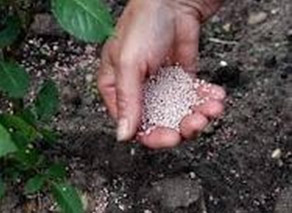
But not all flowers tolerate organic fertilizers well. For example, asters from manure can get sick and die. Nasturtium, marigolds, and many other flowers begin to grow rapidly (go to the tops), and their flowers turn out to be small. They do not like bulbous humus (tulips, daffodils, hyacinths). Here it is desirable to feed them with mineral fertilizers. At the beginning of life, flowers can be fed with nitrogen fertilizer (for building up green mass), at the stage of bud development - with phosphorus-potassium fertilizer (for abundant flowering). Perennials after flowering - potash (for laying full-fledged flower buds next year). If it is difficult to understand the composition of mineral fertilizers, it is better to use a universal mineral fertilizer (complex). Plants that have received a sufficient portion of nutrients will delight you with bright greens and long magnificent flowering and will not be affected by most


